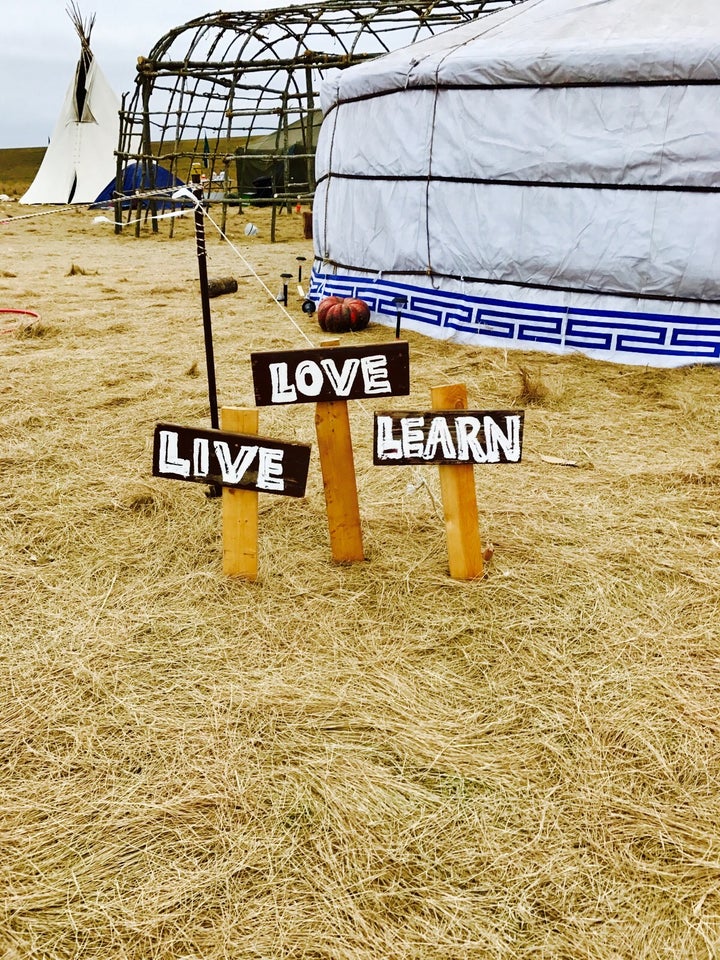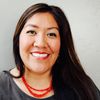
Photo of Mní Wičhóni Nakíčižiŋ Owáyawa (Defenders of the Water School) located at the Očhéthi Šakówiŋ camp
Co-authored by Dr. Bryan McKinley Jones Brayboy, President’s Professor at Arizona State University
President Obama states, “We’re going to let it play out for several more weeks,” but decisions are needed now. With the most recent attack where police drenched hundreds of people with water in below freezing temperatures, “help us stop this pipeline” is more than just a plea, it is a call for action.
Thousands of people, representing hundreds of various Tribal nations and allies from across the globe, are camped near Cannonball, North Dakota to protect the well-being of the environment and its peoples against the Dakota Access Pipeline (DAPL). At the site of “protectors,” there is another movement afoot that is powerful in its connections to place and the future of Indigenous peoples; namely, the focus is on children representing diverse Native nations.
Those children, like many of our own children, are eager to learn, intellectually brilliant, and full of hope. Mní Wičhóni Nakíčižin Owáyawa (Lakota name for The Defenders of Water School) was created to provide a culturally-grounded, nurturing approach to educating the children of the camp. Alayna Eagle Shield, a mother and Lakota cultural specialist/educator, is one of the founders of the school. She outlines the vision thusly, “from the start, Mní Wičhóni Nakíčižin Owáyawa has been a project of love and community.” And this love and community shows. Children learn rich, culturally centered concepts in math, language, science, and social studies. They also receive tailored Indigenous teachings from a multitude of diverse Native peoples in the camp such as learning holistically about drumming and storytelling.
Not surprisingly, the North Dakota State of Education opposes the School. State Superintendent Kirsten Baesler sent a letter to the Chairman of the Standing Rock Sioux Tribe indicating that the school is not “state approved” and that students should attend nearby approved schools for the “educational welfare of the children.”
But, who determines the educational welfare of our children? And, how is that welfare determined? For many Indigenous peoples, the Mní Wičhóni Nakíčižin Owáyawa School is “a good way “ for educating our children. “In a good way” is a common Indigenous expression that honors culture, place, language, and teachings that comprise Indigenous knowledge systems—that is how we engage knowledge as teachers and learners and what we do with that education—with an expectation that good results and deeds will follow.
As a state, North Dakota does not appear to be demonstrating efforts to care for the educational welfare of Native children. In 2014-15, Natives had the highest dropout rates (34.25%) and lowest graduation rates (59.67%) when compared to other racial/ethnic groups, including the largest gap among their White peers (whose dropout and graduation rates are 6.9% and 90%, respectively). The national average of graduation rates for Native high school students is at 70%. At Mandan School District, where Superintendent Baelser encourages camp students to attend, Native students’ academic achievement is abysmal. The high school graduation rates among Native students is at 43.5%, well below the state level. When we take a closer look at achievement levels, at 5th grade, more than 95% of Native students are “not proficient” in mathematics and 73% “not proficient” in English/Language Arts.
To make matters worse, school districts throughout North Dakota (specifically in Grand Forks and Bismark Public Schools) prohibited students from wearing a feather on their high school graduation cap, a sacred and cultural display of honor for many Native peoples. Furthermore, Mandan School District elementary schools are named Custer Elementary School, with a mascot depicting a White male with beady eyes dressed in military attire. And another school, named Lewis and Clark Elementary School, depicts a symbol of two pioneers pointing to a vast, seemingly newfound land. Both schools memorialize figures linked to the deaths of countless Native peoples and the taking of Native lands. These examples and evidence point to the systematic neglect, racist policies, and the lack of cultural understanding that fundamentally impacts our Native children and their educational attainment.
Many people will point to Native students and their parents for the dismal educational marks, but if the majority of all students were graduating high school at 40% levels, would we blame the students and their parents? This is a system-wide issue that fails Native students and their communities; blaming the victims is a distraction.
In the words of Kenji Chambers, a young Lakota boy attending the Mní Wičhóni Nakíčižin Owáyawa School, the students learn to “use our words.” He notes that the people engaged in the battle over the DAPL are, “not going to use our fists…we are going to have to use peace.” This is a powerful example of Indigenous education revitalized. Mní Wičhóni Nakíčižin Owáyawa is working to create a new vision that centers love, peace, and the futures of Native children, moving away from the disempowering trap of North Dakota schools.
As sovereign nations, we have the right to educate our children the way we want to educate them. Treaties have articulated this fundamental right. And yet, government officials like Superintendent Baesler, want to ignore this right and return to, “the old days,” as Kenji Chambers calls them. This young, Lakota boy understands that the “old days” should stay in the past, and that the “new days” are upon us. It is our moral responsibility to stand up, engage the corrupt and underperforming systems of schooling, and work beside and behind Alayna Eagle Shield to support her vision for educating our students in “a good way.”
